Ah, the dreaded “e” word! Are you ready to learn how to edit your book as well as you possibly can? Hold on tight. Editing is one of those things that seems so simple, yet can be incredibly difficult to actually accomplish.
I promise it's worth the effort. If you learn to self-edit, your work will shine like the top of the Chrysler building (i.e. very shiny).
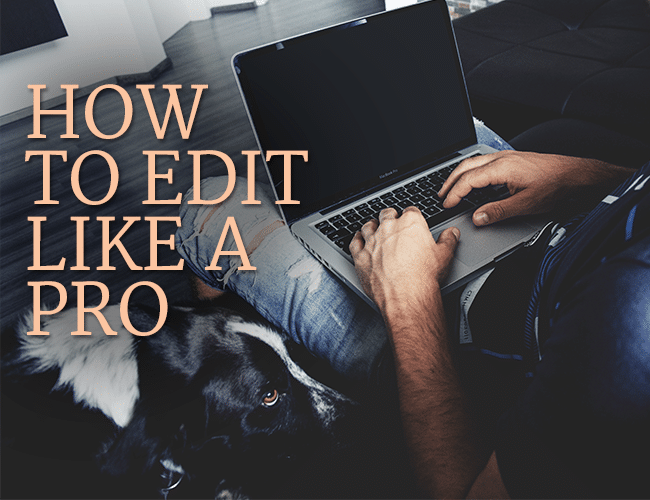
Seth Godin wrote a lovely post last year discussing the different kinds of editing. Of course, he was assuming someone else would be editing your work for you, and I have to emphasize that yes, you will need another pair of eyes.
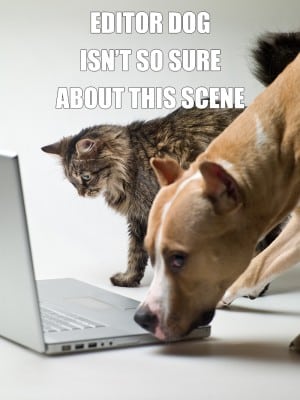
Editor dog isn't so sure about this scene
However, before you send your writing to a paid editor, you need to be able to self-edit.
With that in mind, first we're going to explain the three phases to edit like a pro, then give you three final tips to make the most of your editing time.
Pros Edit In Three Passes
How do you self-edit, you wonder? Simple (though not easy): read your work slowly three times, and each time, read it with a different point of view.
First, Edit Like a Copyeditor
A copyeditor, in essence, makes sure that your work is written according to industry and current English-language standards. When you read your work in this mode, you don't focus on dialog or plot-points or character consistency. To read as a copyeditor is to focus on the picayune details — whether the punctuation is correct, whether the grammar is solid, and whether the spelling looks good.
Think of it as reading your manuscript with the highest magnification of your microscope. You're looking at apostrophes, not paragraphs.
Aside: Of course, in order to do this, you have to know punctuation, grammar, and spelling. That's a whole other post, but suffice it to say this is something adults can learn on their own outside of school. It just takes willingness to work at it, excellent online resources like this one, and the choice to read books that use it.
Pick up a few professionally edited novels and read them. Exposure will help your brain absorb the rules of our bizarre English language.
Then, Edit Like a Line-editor
To read as a line-editor means checking for sentence flow, readability, paragraph arrangement, and organization. You've pulled back the magnification to see your work one chunk at a time (note: still not as a whole).
I think these folks said it best:
[T]he purpose of a line edit is not to comb your manuscript for errors – rather, a line edit focuses on the way you use language to communicate your story to the reader. Is your language clear, fluid, and pleasurable to read? Does it convey a sense of atmosphere, emotion, and tone? Do the words you’ve chosen convey a precise meaning, or are you using broad generalizations and clichés?
—NY Book Editors
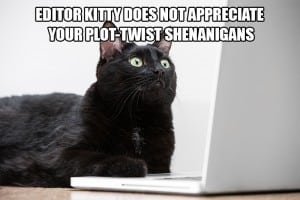
SHENANIGANS
Cool, right? So now you've (a) caught your typos, and (b) ensured your book is readable. Are you done?
Nope.
Now comes the biggie: the content editor.
Last, Edit Like a Content Editor
To read like a content editor is actually closest to reading like a reader. While you will engage your brain heavily (I suggest sleeping well the night before), now you're also going to rely a whole lot on your gut.
This is stepping away from the microscope to view the whole portrait at once.
You're reading to grasp the meaning of the book. You're viewing characters like real people. You're looking at the big picture, and even checking whether chapter names fit their content.
Content editing is the most difficult kind of self-editing to do. In fact, it's almost impossible. No one can look at their work in full objectivity (which is why you'll need to hire an outside editor in the end; you won't be able to detach yourself from your work well enough to do this as thoroughly as it requires).
You still have to try. We all do. It's one of the weird parts of being a writer — trying to read as if you weren't the one writing it down.
I have a few tips to make this herculean effort go more smoothly. I learned them the hard way, stumbling through the world of self-publication.
Three More Tips To Edit Like a Pro
As you go through each of the three phases of editing above, here are three things to think about that will make your editing even more effective.
Editing Tip #1: Make sure you have enough time to put a few days (ideally two weeks or more) between each read.
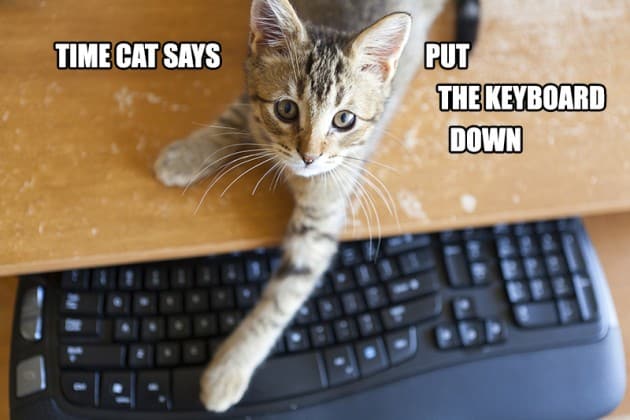
JUST WALK AWAY
I know, I know. You want it done today. I'm sure Romulus and Remus did, too.
This key sounds excruciating (and it is, unless you have another project to work on), but it's an incredibly powerful tool. Have you ever picked up something you wrote a long time ago and spotted all manner of things you'd never have let out in public if you'd caught them the first time? That is the power of time: you have NO idea what a difference it makes to come at your work with fresh eyes.
Editing Tip #2: Get some hot tea and cough drops, and read the whole thing out loud.
Your throat will not thank you for this, but your brain will. It's a funny thing that when we read out loud, we discover the dialog that doesn't work, or the thought-pattern that made a lot more sense in our heads. When we read out loud, it's more obvious which bits and pieces don't fit like we thought.
This one can take a while. Days, even. It's worth the investment. Read your work out loud and see what you find.
Editing Tip #3: Ask yourself THE QUESTION: If you cut this scene/line/character/chapter/paragraph, would anything change?
This is the heart of self-editing, and it is the most difficult. That scene — it may be cute, but is it needed? That conversation — it may seem like it builds character, but does it actually do anything beyond taking up space? Let me ask you again: if you cut that thing (paragraph, chapter, sentence, etc.), would anything change?
This is verging on Stephen King's ubiquitous quote: “Kill your darlings, kill your darlings, even when it breaks your egocentric little scribbler’s heart, kill your darlings.” And this is so very HARD.
Why You Need to Edit (and Kill Your Darlings)
As a personal example, let me tell you a story. I wrote a book which was published in 2012. It involves insanely powerful aliens enslaved to the human race, and at one point, I wrote them a queen. She was awesome. Her skin was the color of eggplant, and she could manipulate matter with simple thought. She was utterly unafraid of anything. I loved her.
Unfortunately, her only reason for existence was being awesome, and that's not good enough.
I realized this on my third read-through. She was cool; but she didn't really have a natural entry point into the plot, regardless of where I shoe-horned her (and I tried in numerous places). Given that the aliens in question did not actually breed (or have royalty, or politics, or social systems of any kind), she didn't really have a point, either.
I really wrestled with this. I love strong female characters, and she was a doozy. But I had to ask myself the question, and you know what I realized? Cutting her made no difference at all.
None.
The plot didn't change.
The characters didn't change.
The outcome of the story didn't change.
In fact, one of the other aliens (who DID have a plotty purpose) fit better in the scene I'd written her into. And so, though it broke my egocentric little scribbler's heart, I removed her from the book.
And the book read better.
She didn't even leave a her-shaped hole behind.
This really, genuinely is the hardest question to ask yourself, but it is worth it. If you want your entire story to matter, if you want every scene to count, you have to ask yourself the question: if you cut it, does anything change?
If the answer is no, cut it. Paste it into another file so you don't lose it, but keep it out of your primary work.
Your manuscript—and your readers—will thank you.
How about you? Have you edited your work lately? Let me know in the comments section.
PRACTICE
For practice today, choose a piece you've written and ask yourself the question, if you cut this scene/line/character/chapter/paragraph, would anything change? Edit for fifteen minutes.
When your time is up, either post your cleaned-up scene in the comments section, or tell us what you've realized it needed. And if you post, please be sure to give feedback to your fellow writers.
Now go edit like a pro.
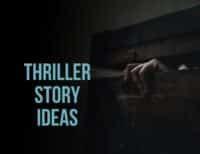
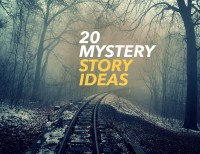

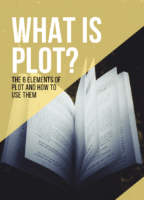



Great editing advise Ruthanne! Thanks for sharing. 🙂
Thank you, Niried!
Thanks, Niried! 🙂 You’re very welcome.
I don’t understand the order of these eidting guidelines. It seems to me that they should be in reverse, Content (incliuding additional tips like the little darlings that might need to be cut), then line flow and lastly copy editing. The reason being that one can change a whole lot of content, adding or deleting, then change a lot of line flow, use better wording, phrasing that creates better atmosphere, emotion, tone, etc., and by the time one’s done those 2 edits the work needs another copy edit, to make sure all the changes are correct spelling, grammar, etc.
Also we have to let others (BETA readers -all those people i.e.reading friends, family, co-workers, whom we are going to thank in our acknowledgments) read our work and give us their impressions, and take what works/ignore what doesn’t and do yet more re-writing and editing after those changes.
But if you have solid reasons for doing the edits in the order you listed, can you share them in more detail with us?
Thanks,
Sheila
Hi, Sheila! The reason I suggested this particular order is the distance it puts between the author and their overarching plot. That little bit of extra time just looking at commas instead of sub-plots can be a really good break for a lot of authors, especially since they may not feel they have time to put the manuscript aside for now.
Also, I find it helps to be able to see entire paragraphs and chapters better if we’re not constantly tripping over punctuation and spelling – both of which disrupt the flow of reading.
And beta readers – oh, I LOVE beta-readers! However, this article is intended to be the stages an author takes before (or even without) beta-readers. Not everyone who reads this site has had time to build up a community yet, and needs some helpful tips for the present time. 🙂
Of course, everyone edits differently! For me, if I’m constantly stopping to fix apostrophes, I miss the theme of the chapter. Other people work in quite the opposite way! You edit the way that’s best for you. 🙂
I agree completely with Sheila. You have to correct all the gross errors first – the plot holes, the changing eye colours, the disappearing characters, the dangling subplots, minor characters becoming too prominent….how it reads and whether commas are in the right place come later.
I entered the editing phase on September 1.
One question: Shouldn’t the big picture edit be first? If the paragraphs aren’t right, what’s the logic of editing the apostrophes?
Hi, Carrie! The reason I suggested going this direction is actually some secret craftiness on my part: most people really feel they don’t have time to take two weeks off from their manuscript.
By focusing on tiny details first and putting the plot aside, they actually ARE setting it aside, at least a little.
I’ve found that it helps writers see their plot more clearly by looking away from it for a bit, and that’s why I suggested this order. However, not everyone’s brains work the same way. 🙂 You edit the way that’s best for you!
Ruthanne,
That makes sense.
The reason I asked is that I have a couple of manuscripts that have been edited more or less in the order you presented, but I’ve found larger Big Picture problems more than once with each one. It has been a significant waste of time to fine tune scenes and chapters that would have been cut first had I done things the other way around.
I completely get that! 🙂 I’m really glad you have a way that works for you!
Right on! No time at the present to do the practice exercise, but I’ve done it before at the behest of my “beta readers”, whom I think are a major part of the editing process and very cost effective! My wife, Lorraine, an award-winning author, is my final, in-house editor, and so far, I have not availed myself of paid, professional editors except what was provided in my Create Space package.
I am an octuagenarian and blind with no light perception. I use a screen reader on my computer. I can only hope that your graphic of “Cat and Dog” refers to my first novel, but, no – it can’t be! 🙂 See my bibliography at http://www.jamesorytheall.com
That’s fantastic that you have such a wonderful set of readers and writers around you! Sadly, those were not references to your first book, but now that I’ve looked it up, I’d say they could be! 😉
Ruth Ann, thanks for the compliment! Our Longmont (Colorado) Writers Club is the best thing that ever happened to Lorraine and me! I am fortunate indeed. Now back to launching my newest novel, “Murder At Two Rivers”. Thanks again for the nice compliment!
I’ve broken a few of these (okay, all of them) First, I am on a time limit. I’m editing my work right now and they wanted it yesterday. It’s self-publishing, so I’m a little more in control, but I’m starting to sense the impatience. So the whole “wait two weeks between reads” just isn’t going to work, although I really REALLY wish it could 🙁 I have two weeks to finish it!
Second, I have been doing the three step program backwards. I’m doing the content, then the line, then the copyediting. Oops!
The only thing I think I have efficiently grasped is killing my darlings. I read that Stephen King quote on a post here a couple months ago, and it really changed the way I view my ‘darlings’. I have killed quite a few of them.
Do you have any advice for someone on a time crunch?
“I can do all things through Christ who strengthens me”
Reagan
Reagan, if you’re so crushed for time, shorten the gaps between each of the stages. Depending on the length of your work, I suggest no less than a couple hours gap or an hour for shorter pieces. Close out your documents/ files and do something completely different, be it an online game, or a walk outside. Anything other than reading, so you clear your mind as completely as possible. Then go back and edit and repeat as necessary until all 3 are done
Great suggestion, Em!
Thanks for the idea, Em! It makes sense, leave gaps that are proportional to the time crunch. My work is actually a novel, so it might be every few scenes or chapter…
You’re welcome! I always try and edit each chapter as it’s written, so it doesn’t then become too overwhelming a task. That said, as per my own post in these comments, I’m working through 13 chapters now to edit and rewrite, having decided to change the direction of the novel. I did edit each of them as they were originally written, but in this case, it might be a case of do as I say and not as I do. LOL
LOL…I hear you! I’m in the exact same spot – you think all you have to do is edit, and you end up rearranging the whole thing! I guess it’s the burden we bear!
My original opening chapter was great as it was, when first looked at. Now it’s been split into three that will hopefully be even better. Headed back to them now 🙂
Hi, Reagan! Boy, do I understand the time-crunch stuff! And yes, two weeks is ideal – but not always possible.
Here’s a trick I’ve used often: if you have a section with possible darlings who need to be killed (wow, that sounds weird out of context!), make a copy of the chapter and set it aside. Then you can compare the two versions – with darlings and without – to see which is better. Weirdly, I found the one without USUALLY is better, but not always; if it doesn’t work, your original is still there to copy and paste back in.
My only other suggestion for being on a time-crunch: you have to clear other things out of the way to make that time. It’s not that whatever else is happening is bad! It may be very good stuff – but right now, it needs to be put on hold while you get this done.
These are great tips that I will certainly put to use! The hardest part is, like you said, putting the the other things aside.
Your comment made me laugh, because that does sound so weird out of context! Since I read that quote about killing darlings, I’ve told a few of my family members (who are not writers) and every one of them has looked at me strange. We writers are really the only ones who understand! 😉
Thanks so much for the advice. I need all the help I can get!
This is a good description of the self-editing process itself. I especially like Editing Tip #1 – because all three editing processes (line, copy and content) are dependent on it. To expand on this limitation further than the author, it is this ability for the self-editor/author to first see their mistakes that need editing – that is critical in the effective self-editing process. This self-editing limitation factor is the “familiarity” we have with our own work. It is a familiarity that necessarily comes from the creation process – examining, shaping, adjusting and refining or words into credible ideas that build a story. It is our intimate mental handling of our creation that makes it so internal to us. It is a part of the self that makes it so comfortable and familiar to us – unfortunately including its errors. We love our creation. Like the wrinkled, blotchy, gore covered, uncoordinated being that is expelled painfully from its mother’s womb, our creations are never less than beautiful to us – at least until the birthing drugs wear off.
Most of us will read over our own missing words, typos, incorrect usages (i.e., their and there – and other the errors that I will miss herein) – even though we would recognize the same mistakes reading another author’s work instantaneously. Reading slowly, reading paragraphs from bottom to top, and other self-editing efficiency improvement devices are all helpful for self-editing. However, nothing improves self-editing accuracy like letting the piece to be edited “rest” for an appropriate period of time. Generally, the longer – the better, depending on our particular minds recall and other memory capabilities that contribute to the familiarity editing limitation factor.
For me, several days to a couple of weeks allows me loose significant enough familiarity with my writing so that most of the errors (definitely not all) that I normally read over become obvious and easily corrected. This doesn’t mean that I stop writing while am “loosing familiarity.” I try to do several chapters or articles and let the previous ones rest while I keep moving forward. Then I come back to my “rested” work when my editing familiarity is minimal and editing efficiency is more at its optimum.
Author familiarity affects copy and line editing more so than content editing. Content editing is a multi-phase process. Early on content editing relates to the smallest unit relationships and their continuity – first sentences and paragraphs, but as the work grows content relationships expand out like a spider web into sections, chapters, moving back and forth between past and present, and then all of these details have to seamlessly relate (and ideal state) to the whole work’s story. Ultimately, few if any of us are going to be unbiased in our content editing and this is where other critical test reader’s input opinions will be most valuable – if not absolutely critical.
Multiple critical test readers can be more useful than a single professional content This is because the content editor is limited in the best case to still being only one person/reader with one persons opinions and biases. We all have biases. If I have five critical readers that tell me they don’t get something, or find it difficult to understand, or just ineffective, or even have to ask “how” or “why” – I will focus on their consensus regardless of whether a professional content editor agrees. Admittedly, if you have a competent content editor it is unlikely that their professional take is going to be that different than the average reader. In my final analysis readers buy books, not editors. So, in almost all things my test readers rule.
You’ve said it so well! I like to sum these problems up as “author-brain.” It may be obvious to the author because the author knows all the unspoken connotations, but the reader won’t see it – and in cases like that, the reader is always right.
I’m right in the middle of an edit/ rewrite of the first chapters of my manuscript, so I’ve done much more than the suggested 15 minutes today. Grin. I’ve so far split the original first chapter, which was great in and of itself, into 3 new ones that will need work to flesh out and complete, but will form a much stronger base to the novel once I’ve completed them
That’s great, Em! This sounds like the kind of hard work that ends up really rewarding.
Thank you! I’ve been editing the full existing manuscript as per step 1 here for a few days and so thought I’d struggle to switch off the editor in me and turn the author back on. Grin. To ease myself back into author mode I’ve done a bit of both today, editing some of the text that will remain, but not getting totally absorbed by it, then adding the direction for the new paragraphs
I edit almost oppositely. I start big and the last thing I do is punctuation, grammar. Going from the 30,000-ft view down to the minutia. Then back to the big picture before sending it to my editor.
That’s very cool, Dennis! I love how different writer-brains process in a different way. For me, when I tried to do big-picture-first, I kept stopping because I got tripped up by typos and punctuation errors… and when you stop in the middle of reading, you’ve already lost big-picture flow. That’s why this worked best for me. 🙂
These are great tips, but I would do them backwards. It makes more sense to work on the story from a broad perspective before you work on spelling and punctuation. Otherwise, when you rewrite that scene that isn’t working well, you have to go back and fix the grammar again.
Great example with the purple alien. She sounds awesome! I hate killing my darlings more than anything!
I agree Beck. Good advice, but backwards.
Thanks, Joan! Hey, you edit the way that works best for YOU. 🙂 In my case, trying to read big-picture doesn’t work when there are typos. Typos throw me right out of the story; they trip me up, leaving me unable to SEE the big picture, so if I don’t fix them first, I can’t tell what needs to be redone in the long-scheme.
Thanks, Beck! 😀 I’m so glad you’ve found a way that works well for you. For me, editing big-picture-first never works because I get tripped up by smaller errors like typos and punctuation oopses, and the moment I stop in the middle of a chapter, I’ve already lost that big-picture flow. That’s why this way works for me. 🙂
Ah, that makes sense. I really hate fixing punctuation and spelling so I have no problem saving it till last!
Another useful article. Thanks! BTW, I liked the highbrow Romulus and Remus reference. Smart!
Haha, thanks, Mark!
This article gave me goosebumps! I haven’t touched my work for months and I guess it’s time to edit. I’m a wimp when it comes to killing my darlings, that’s why I believe in getting professional editors tell me so.
Thanks for the useful tips, Ruthanne. By the way, I think that maybe copy editing should come last. After revising some lines during the line editing phase, you have to comb it again for grammar bumps, right?
I’m so glad to hear that, Anna! You can do it – tackle that manuscript. 😀 I know you can do it!
And you can do it in whatever order works best for your brain, of course. 🙂 For me, if I try to edit big-picture-first, it doesn’t work for one major reason: I see the typos, and they completely disrupt the flow for me. When that flow is gone, I can’t see the plot as a whole anymore; it’s kind of like trying to test tires without fixing the pot-holes first, if that makes sense.
another helpful tips.. thank you for sharing Ms. Ruthane..
You’re so welcome, Jean!
Madani
Hi,
First of all I write in french (the poorness of my English doesn’t permit me to do in the language of Shakespeare) and I have gone through the steps you’re pointing at. I have four novels, twenty short stories and four tales. As I am a member of ‘the write’s village’ I have a global idea on the subject. The problem in my country is that editing isn’t an easy affair. That’s why my novels are fading in my computor . I continue writing I see clearer but I feel submerged with the desire of procrastination, the lack of volentee to write and…and..and…
Hi, Madani! Wow – that’s such a challenge. I respect you so highly for pushing forward in spite of all that pressure. I believe it’s worth it; and I believe you are climbing a very steep hill. My hat’s off to you, Madani!
thanks for these tips… I’m just getting to (and dreading) the editing stage (well, 3 stages) now. I suppose the upside is that the minimum-two-week break will allow time to dabble in other projects!
Hi, Jean! It does give extra time, and it’s really helpful. Your brain will thank you! I hope the break from that particular piece really helps you grow. 🙂
Ruthanne, as usual, your posts are so didactic and focused. I really gained a lot from this one, and it’s funny because I was basically doing what you advised in a semi-jumbled way without realizing that these particular tasks had definite names assigned. Now I know what they are and will keep them in the order you suggest. One thing I struggle with at times is allowing sufficient time in between the different aspects of the editing process and that’s what I need to work on. Thanks again for this wonderful post!
Wow, Claire, that’s terrific! I’m so glad to hear that. And yes, I always struggle with the time-frame issue; I’m a perfectionist, so it’s a challenge for me to just put the thing down and walk away from it. 🙂 Thanks for your comment!
Ruthanne Reid, where have I been, it’s so nice to meet you. I am definitely going to pay closer attention to everyone’s face. I’m a little late with some of the posts, but I just love them because they have taught me so much. The post for editing. I just submitted my wacky scavenger (not for the contest) and I had to edit for punctuation, cut character, and read aloud. I started with about 900 words and cut it down to 500. The story didn’t change and the movement was faster. Thanks to you and this post. KEN
It’s nice to meet you, too, Kenneth! I’m delighted this helped you. Good luck with your writing! 🙂
This is the first bit of practical advice I’ve had on editing. On reading I realised that I’ve never really edited properly. (No wonder my stuff always read like a rough first draft!)
Thanks, Winnie! It took me a LONG time to figure this out, too!
I actually think it should go in the opposite direction. If at step three you need to add a few scenes, you’ll have to go back and do steps one and two anyway.
Thanks, Katy! I honestly believe you have to edit your work at least three times from top to bottom, anyway, so consider all the steps being touched upon repeatedly. 🙂
Hey Ruthanne,
I came across it right before I was going to edit an important article. Your step by step process is going to make the editing process quite easy for me.
This is one of the posts that I’d like to save and read again and get it ingrained into my system.
Thank you 🙂